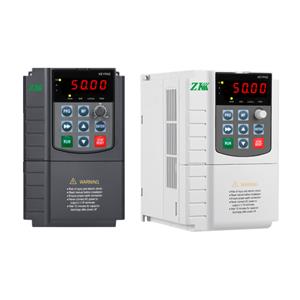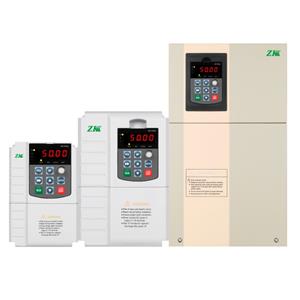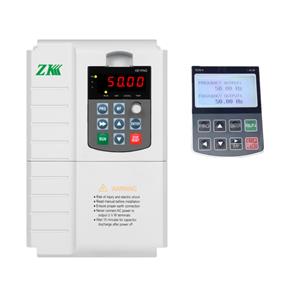Enhancing Lightning Protection and Surge Suppression in Solar Pump Inverters
Solar-powered water pump systems have emerged as a cornerstone of sustainable water management in remote and off-grid regions, offering an eco-friendly and cost-effective solution. These systems harness solar energy through photovoltaic panels, which is then converted by solar-powered water pump inverters to drive water pumps. However, their exposure to lightning strikes and electrical surges poses a significant threat, potentially causing catastrophic damage to solar-powered water pump inverters, solar panels, and associated components. Such incidents can lead to system downtime, costly repairs, and compromised water supply. Consequently, integrating robust lightning protection and surge suppression mechanisms into solar-powered water pump inverters is paramount for ensuring system reliability, longevity, and uninterrupted operation.
The Nature of the Threat: Lightning and Electrical Surges
Lightning, a formidable natural phenomenon, generates extraordinarily high voltages and currents within milliseconds. When a lightning strike occurs in proximity to a solar-powered water pump system, it can induce transient overvoltages, or surges, within the electrical circuits. These surges propagate through the wiring, jeopardizing sensitive electronic components, particularly the solar-powered water pump inverters. Additionally, surges can arise from other sources, such as power grid switching operations or electrical system faults, further compounding the risk.
Key Components of Lightning Protection in Solar-Powered Water Pump Inverters
To safeguard solar-powered water pump inverters from lightning and surge-related damage, a multi-faceted approach incorporating several protective measures is essential:
Surge Protection Devices (SPDs):
SPDs serve as the primary defense against lightning-induced surges. Strategically installed at critical points—such as the solar-powered water pump inverters' input terminals, solar panel array, and water pump motor—SPDs function by diverting excess voltage to the ground, thereby shielding connected equipment from harm. SPDs are categorized into Class I, Class II, and Class III, each tailored to manage specific surge energy levels, ensuring comprehensive lightning protection.
Grounding and Bonding:
Effective grounding and bonding are foundational to lightning protection. Grounding involves establishing a low-resistance connection between the electrical system and the earth via a grounding electrode, facilitating the safe dissipation of lightning currents. Bonding ensures that all metallic components, including the solar-powered water pump inverters' casing and solar panel frames, are electrically interconnected, mitigating potential differences that could result in arcing or equipment damage.
Isolation and Shielding:
Isolation and shielding techniques are employed to counteract electromagnetic interference (EMI) induced by lightning. Isolation utilizes transformers or optocouplers to segregate the solar-powered water pump inverters from the broader system, curtailing surge propagation. Shielding entails encasing sensitive components in conductive materials that obstruct EMI, thereby preserving the integrity of the solar-powered water pump inverters' electronics.
Voltage Clamping Devices:
Voltage clamping devices, such as metal oxide varistors (MOVs), play a pivotal role in limiting voltage across the solar-powered water pump inverters' input terminals. When voltage surpasses a predefined threshold, MOVs activate, clamping the voltage to a safe level and safeguarding the solar-powered water pump inverters from overvoltage damage.
Redundant Protection Circuits:
Beyond primary surge protection measures, solar-powered water pump inverters may incorporate redundant protection circuits that offer an additional layer of security. These circuits monitor voltage and current conditions, disconnecting the solar-powered water pump inverters from the power source upon detecting anomalies, thereby preempting potential damage.
Best Practices for Optimal Lightning Protection
To maximize the efficacy of lightning protection in solar-powered water pump inverters, adherence to the following best practices is imperative:
Proper Installation:
Ensure that the solar-powered water pump inverters, solar panels, and associated components are installed in strict compliance with manufacturer specifications and local electrical codes. This includes accurate grounding, bonding, and strategic placement of SPDs.
Regular Maintenance:
Conduct routine inspections and maintenance of the lightning protection system to verify the operational integrity of all components. This encompasses assessing the condition of SPDs, grounding connections, and shielding elements.
System Design Considerations:
During the design phase of a solar-powered water pump system, account for local lightning activity and environmental conditions. In regions with high lightning frequency, augmenting protective measures may be necessary to enhance system resilience.
Education and Training:
Equip system operators and maintenance personnel with comprehensive knowledge of lightning protection protocols and response strategies in the event of a lightning strike or surge.
Lightning protection and surge suppression are indispensable elements of solar-powered water pump inverters, particularly in thunderstorm-prone areas. By deploying advanced protective measures such as SPDs, grounding, shielding, and voltage clamping devices, the risk of damage from lightning-induced surges can be substantially mitigated. Complementing these measures with proper installation, regular maintenance, and adherence to best practices further fortifies the system's durability. As solar-powered water pump systems continue to underpin sustainable water management initiatives, prioritizing effective lightning protection will remain a critical endeavor, ensuring their steadfast operation and enduring contribution to water security.




